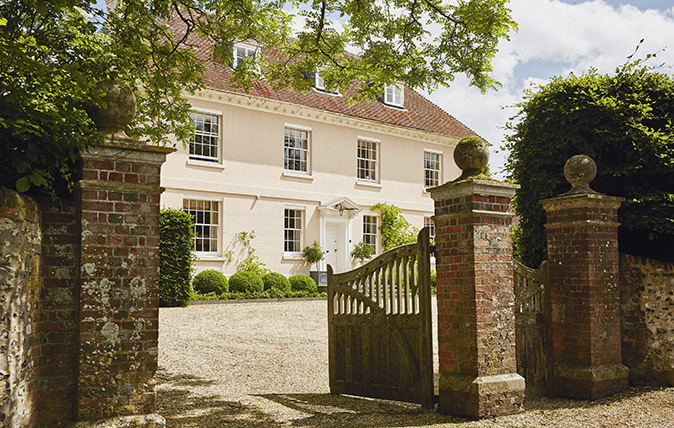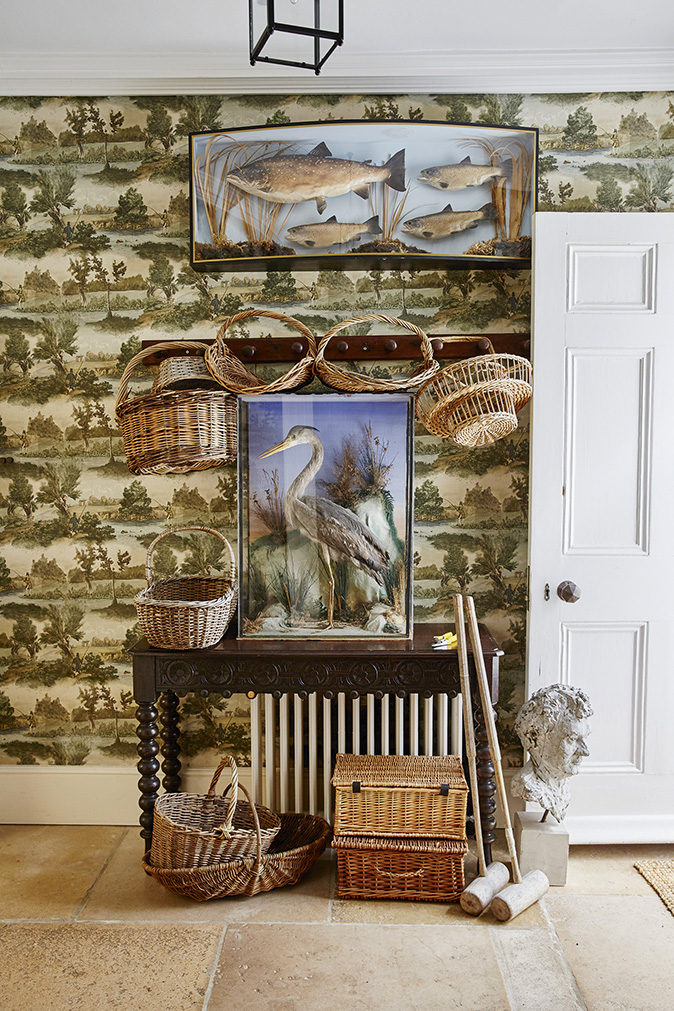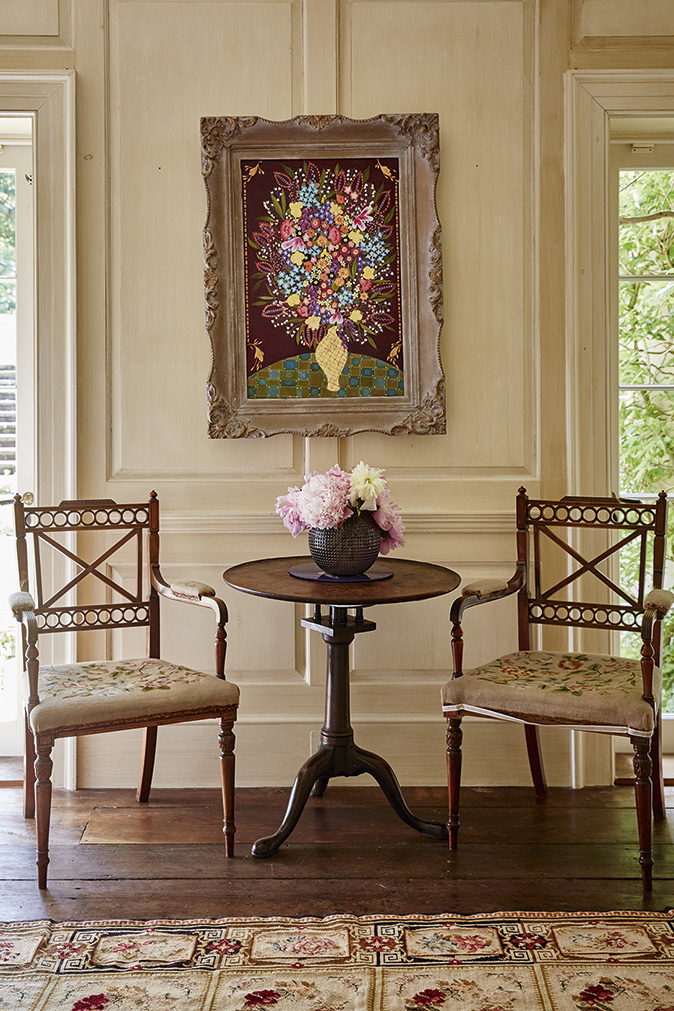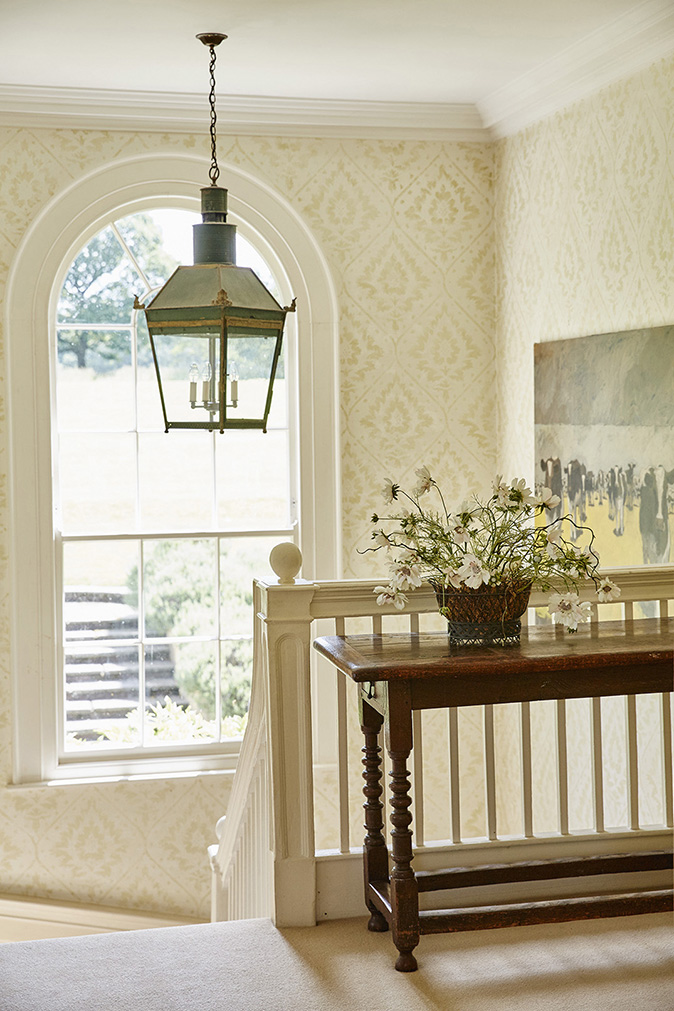Beauworth Manor: A lesson in house restoration
Arabella Youens finds that, when restoring a house, less can definitely be more.


After the Second World War, Beauworth Manor failed to live up to its name: a series of Victorian and Edwardian additions had created a warren of domestic offices at the back and a large room on its northern elevation. Having been used as a nursing and children’s home, the house also bore the scars of institutional use.

Some of these awkward additions are plain to see in the Country Life advertisement published on February 22, 1946, when the house was put up for auction by the Berkeley Square office of John D. Wood. The original sash windows had been replaced with plate glass, two Victorian bay windows on either side of the entrance had been added and the front door had been stripped of the original pediment and decorative detailing.
When Nigel Anderson of ADAM Architecture was asked to come and look at the house in the late 1990s, he remembers it was in a ‘desperately sad state’. Some of the more recent additions had been removed, but ‘it was obvious that, when elements had been demolished, what was left was very functional and utilitarian’.

Externally, it was possible to establish the core of the late-17th-, early-18th-century house, with its three, large chimney stacks proving that there were originally three rooms front and back. A Victorian owner then added a large wing that juts out about 80° off a right angle to the southern elevation of the house. It was this footprint that was preserved.
The work undertaken to reconfigure the house was substantial. Externally, it meant turning ungainly door openings into windows, rationalising the rooflines, widening openings, replacing plate-glass windows with sash windows to match those of the main elevation and replacing the entrance porch - which, by then, was ‘a complete mishmash of styles’, according to Nigel - with something that was more Classically literate.

Internally, the original staircase was restored, rooms were squared up, the layout was simplified and the myriad dark corridors and service rooms turned into larger, lighter spaces. Finally, workshops and stables were converted into a playroom, a home office and additional accommodation.
‘Surprisingly, there are still many country houses that find themselves in a similarly muddled state and reconfiguring them in a coherent and balanced way is our bread and butter,’ says Nigel. ‘It’s absolutely true that less is so often more, but, with listed houses, such as Beauworth, you might come up against listed-building inspectors who require some convincing when it comes to making changes to Victorian or Edwardian additions. Fortunately, with several decades of experience, and an approach of give and take, there is normally a way to resolve these problems.’
Sign up for the Country Life Newsletter
Exquisite houses, the beauty of Nature, and how to get the most from your life, straight to your inbox.

By the time the current owners, Emily and Roly Fisher, bought the house eight years ago, these sympathetic improvements meant that the changes they’ve needed to make subsequently have been largely only cosmetic. ‘Fortunately, our predecessor had impeccable taste,’ says Emily.
Some of the furniture, including the French refectory table in the kitchen, was sourced through dealers; other items, such as the wheel-backed chairs, came from local auctions in Hampshire. Clues to Emily’s career in the diplomatic service and a spell in Buenos Aires are dotted around the house: a sofa stool in the drawing room is covered in cowhide and Argentinian wool throws are used to soften the space.

Taxidermy, both inherited and bought from specialists such as Alexander von Westenholz, vies for space with eye-catching modern art, such as the colourful oil in the back hall by Hepzibah Swinford that was bought from the Rebecca Hossack gallery.

Half a century after it appeared in Country Life, the feeling is of a relaxed and much-loved family home, faithful to its Georgian roots, and freed from its institutional past.
Adam Architecture (01962 843843; www.adamarchitecture.com)
-
 Six rural properties with space, charm and endless views, as seen in Country Life
Six rural properties with space, charm and endless views, as seen in Country LifeWe take a look at some of the best houses to come to the market via Country Life in the past week.
By Toby Keel
-
 Exploring the countryside is essential for our wellbeing, but Right to Roam is going backwards
Exploring the countryside is essential for our wellbeing, but Right to Roam is going backwardsCampaigners in England often point to Scotland as an example of how brilliantly Right to Roam works, but it's not all it's cracked up to be, says Patrick Galbraith.
By Patrick Galbraith